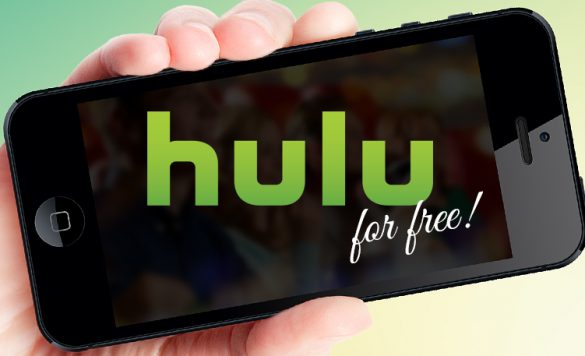Workplace Conflicts? 14 Tips to Improve Communication
Updated on: by Amy Kennedy

In today’s fast-paced corporate world, effective communication is the backbone of any successful team.
Need Easy Extra $350+/Month For Free?
- SwagBucks: Watch videos, take surveys, shop and more to earn real money. Earn up to $35 per survey! No hidden fees and completely free. Join Swagbucks Now to Get $5 Free
- InboxDollars: Has so far paid its members over $40 Million. Watch videos, take surveys, shop and more. Join InboxDollars Now and Get Free $5
- SurveyJunkie: Make $5-$25 in your spare time from home to take online surveys, participating in a Focus Groups and trying new products. Join SurveyJunkie Now
- Branded Surveys: Complete online surveys. Collect points. Redeem your points for cash & gift cards. No hidden fees and completely free! Has so far paid its members over $18 Million. Join Branded Surveys Now
Misunderstandings and unclear messages can quickly escalate into conflicts, hindering productivity and team morale.
Recognizing the profound impact of seamless communication, it’s essential for businesses to actively cultivate a culture of open dialogue.
This blog delves into practical ways to enhance workplace interactions, offering 14 top tips, alongside bonus insights, to navigate the challenges of team communication.
Understanding the Root Causes of Workplace Conflicts
A harmonious workplace is a product of understanding and addressing the root causes of conflicts. By delving deeper into the primary triggers, businesses can better equip themselves to foster a collaborative environment.
This section explores the role of miscommunication, the influence of personal biases, and the significance of preconceptions in workplace conflicts.
The Role of Miscommunication
Miscommunication can be a significant barrier to effective teamwork. Whether it stems from unclear instructions, lack of clarity in objectives, or simple misunderstandings, it can lead to frustrations and preventable disputes.
Tools like Slack or Trello can help streamline communication, but it’s equally important to ensure that the message is conveyed accurately and understood by all parties involved.
The Importance of Recognizing Personal Biases
Every individual brings their unique perspective, shaped by their experiences, culture, and background, to the workplace. While this diversity can be a strength, it can also lead to biases, both conscious and unconscious.
Recognizing and addressing these biases is crucial to ensure fairness and equity in the workplace. Platforms like Project Implicit offer tests to help individuals identify potential biases, promoting self-awareness.
Significance of Preconceptions
Entering discussions or projects with preconceived notions can hinder objective evaluation and decision-making. It’s essential to approach situations with an open mind, willing to adapt and adjust based on new information.
Training programs, such as those offered by MindTools, can equip teams with strategies to combat the influence of preconceptions, fostering clearer and more effective communication.
Now Let’s look at the 14 tips:
1. Active Listening:
True communication is a two-way street. While articulating one’s point is vital, understanding another’s viewpoint is equally crucial.
The Fundamentals of Active Listening
Active listening isn’t just about hearing words; it’s about interpreting and understanding the context. Fully focusing on the speaker, refraining from formulating a response until they finish, and giving verbal and non-verbal cues of understanding are key components.
Need Easy Extra Cash?
Pinecone Research, a leading name in online survey panel honesty, absolutely guarantees $3 cash for every survey you complete!
Take advantage of their time limited New Membership drive and register NOW. Join today: 100% free!
Join Pinecone Research Now
Online platforms such as Mind Tools offer valuable insights and exercises on enhancing this skill.
Avoiding Interrupting the Speaker
Letting someone finish their thought before chiming in is not just a matter of etiquette; it ensures you get the complete picture. Interrupting can skew the context, leading to misunderstandings.
Moreover, it can make the speaker feel unheard, further exacerbating conflicts.
Feedback as a Tool for Clarification
After attentively listening, it’s valuable to paraphrase and restate what you’ve heard. This action ensures both parties are aligned in their understanding. Resources like Edutopia provide guidance on effective communication and feedback techniques within professional settings.
2. Clear and Concise Messaging:
With the myriad distractions in today’s digital age, clarity in communication is more vital than ever.
Importance of Being Direct
Ambiguity can be a significant cause of workplace misunderstandings. Addressing main points without unnecessary embellishments can prevent many potential conflicts. This doesn’t mean being curt or rude but ensuring that the essence of the message is not lost in excessive words.
Avoiding Jargon and Complex Terminology
Industry-specific terms, while second nature to some, might be alien to others, especially those new to the field. Always consider your audience and ensure your message is accessible to all. Tools like Plain Language can assist in simplifying complex ideas.
Utilizing Visual Aids
Sometimes, words alone might not suffice, especially with complex data or processes. Using visual aids, be it diagrams, flowcharts, or infographics, can significantly enhance understanding. Websites like Piktochart offer a user-friendly interface for creating effective visual content.
3. Open Door Policy:
A culture of open communication can be the bedrock of conflict resolution.
Accessibility of Leadership
When employees feel they can approach their superiors without barriers, it nurtures a culture of trust. Leaders should be approachable, willing to listen, and open to feedback, creating an environment where concerns can be raised without fear of reprisals.
Regular Check-ins
Holding regular meetings ensures that issues are addressed in real-time rather than festering and evolving into larger conflicts. Whether it’s a quick weekly catch-up or monthly review, these sessions offer an opportunity for clarification, feedback, and direction.
Feedback Mechanisms
Providing avenues for employees to voice concerns or offer suggestions, especially if anonymous, encourages honest feedback. This can be particularly beneficial for those who might feel intimidated to speak up in person. Tools like FeedbackFruits offer platforms for constructive and anonymous feedback within professional settings.
4. Constructive Feedback:
The way feedback is given can either foster understanding or instigate conflict.
Choosing the Right Time and Place
Timing and setting can dramatically affect how feedback is received. A public critique can cause defensiveness, while a private, well-timed discussion can promote receptiveness.
It’s essential to ensure that the environment is conducive to a constructive conversation, with resources such as Harvard Business Review often discussing the dynamics of delivering feedback.
Focus on Behavior, Not Personality
Feedback should be specific to actions or behaviors rather than making it personal. By distinguishing between the individual and the action, it reduces defensive reactions and promotes constructive change. The Center for Creative Leadership offers insights on this distinction.
Offer Solutions, Not Just Criticisms
Highlighting areas of improvement is only half the equation. Offering tangible solutions provides a roadmap for positive change, turning a potential point of contention into a collaborative problem-solving session.
5. Respect Cultural and Generational Differences:
With diverse workplaces becoming the norm, recognizing and respecting differences is crucial.
Educate Yourself on Cultural Norms
What might be considered straightforward in one culture might be viewed as rude in another. Being aware of cultural communication norms can prevent unintentional misunderstandings. Websites like Commisceo Global offer country-specific etiquette guides for professionals.
Understanding Generational Communication Styles
Different generations have varying communication preferences, be it face-to-face meetings, emails, or instant messaging. Respecting these preferences and finding a middle ground can enhance mutual understanding.
The Pew Research Center has conducted extensive studies on generational dynamics in the workplace.
Promote Inclusive Activities
Encouraging team-building activities that celebrate cultural and generational diversity can foster mutual respect and understanding. This can be achieved through multicultural potlucks, heritage days, or generational knowledge-sharing sessions.
6. Use Technology Wisely:
While technology has enhanced workplace communication, it also presents unique challenges.
Choosing the Right Communication Tools
Not every piece of information requires an email. Sometimes, a quick chat or a face-to-face meeting might be more effective. Platforms like Slack or Microsoft Teams can streamline communications for different needs.
Maintain Email Etiquette
Overly lengthy emails, unclear subject lines, or misuse of CC/BCC can cause miscommunications or overlooked messages. Resources like Email Overload Solutions offer best practices for efficient email communication.
Video Conferencing Best Practices
With remote work becoming more prevalent, mastering video conferencing tools is essential. Ensuring good video and audio quality, reducing background distractions, and being mindful of time zones can make virtual meetings more productive. Platforms like Zoom or Cisco Webex provide guidelines for best practices.
7. Encourage Open Dialogue:
Promoting a transparent environment can prevent many workplace conflicts from arising.
Creating a Safe Space for Discussions
Employees should feel comfortable expressing concerns without fear of retaliation. Establishing dedicated feedback channels or regular open-door sessions can foster this sense of security. SHRM offers resources on creating psychologically safe workplaces.
Hosting Regular Team Meetings
Consistent team meetings can provide opportunities for clarifying misunderstandings, addressing concerns, and reinforcing team objectives. They also create an environment where communication is regular and expected, reducing the chances of misinformation.
Earn Everything… nearly!
Join Opinion Outpost, one of the few faithful and honest survey panels and earn cash and gift cards for your opinion. Stack your points and redeem them: Simple! No hidden fees and completely free!
Join Opinion Outpost Now
Use Mediators for Difficult Conversations
Sometimes, having a neutral third party can facilitate a more productive conversation between conflicting parties. Professional mediators or HR specialists can provide unbiased perspectives and help guide the discussion towards a resolution.
8. Active Listening:
True communication involves more listening than speaking.
Practicing Patience and Attentiveness
Listening is not just about hearing words but understanding the message behind them. Taking the time to truly understand an employee’s perspective can resolve many potential conflicts. MindTools provides several resources on improving active listening skills.
Avoid Interrupting
Letting the other person finish their thoughts without interruption ensures they feel heard and valued, reducing the chances of frustration or misunderstandings.
Clarifying and Paraphrasing
After listening, it can be beneficial to paraphrase what you’ve understood, ensuring both parties are on the same page. This simple step can prevent numerous miscommunications.
9. Stay Solution-Oriented:
Focusing on solutions rather than problems is crucial for productive communication.
Promote Collaborative Problem Solving
Instead of assigning blame, encourage teams to work together to find solutions. This can foster a sense of unity and shared responsibility.
Implement Feedback Mechanisms
Tools like suggestion boxes or anonymous surveys can be invaluable in gathering actionable feedback. Platforms such as SurveyMonkey or Google Forms make this process straightforward and accessible.
Celebrate Resolutions
Acknowledging and rewarding the successful resolution of conflicts can motivate employees to adopt a solution-oriented mindset in the future.
10. Continuous Training:
Like any other skill, communication can be honed and improved with training.
Offer Communication Workshops
Periodic workshops can equip employees with tools and techniques to communicate effectively. Organizations like Toastmasters offer training programs tailored for corporate environments.
Promote Resources and Materials
Encouraging employees to read books or articles on effective communication can be beneficial. Resources like Dale Carnegie’s works remain timeless references.
Role-playing and Simulation
Practicing difficult conversations in a controlled environment can help employees handle real-life situations better. This method allows them to understand different perspectives and refine their communication approaches.
11. Respect Cultural and Generational Differences:
With diverse workplaces, understanding and valuing differences is vital for effective communication.
Educate on Cultural Sensitivities
Being aware of global customs and practices can prevent unintentional misunderstandings. Programs that focus on cultural competence can be beneficial for multinational companies.
Adapt to Different Communication Styles
Each generation, from Baby Boomers to Gen Z, has distinct communication preferences. Adapting accordingly, whether it’s face-to-face conversations or instant messaging, can prevent potential friction.
Celebrate Diversity Days
Hosting events or celebrations for different cultures or generations can be an excellent way to foster understanding and appreciation among employees. It can also lead to a more inclusive environment.
12. Provide Constructive Feedback:
Feedback, when delivered properly, can lead to improvement rather than conflict.
Use the “Sandwich” Technique
This method involves starting with a positive statement, followed by constructive criticism, and ending with another positive statement. It ensures the receiver remains receptive and understands the feedback’s intent.
Avoid Blame Language
Using “I” statements instead of “you” statements can prevent the receiver from becoming defensive. For instance, saying “I felt concerned when the report was late” instead of “You are always late with reports.”
Set Clear Expectations
For feedback to be actionable, the receiver needs to know what’s expected. Tools like Trello or Asana can help teams manage and track progress on tasks, ensuring everyone understands their responsibilities.
13. Manage Emotions:
Emotional intelligence plays a significant role in conflict resolution and effective communication.
Promote Emotional Awareness
Encourage employees to recognize and manage their emotions. Resources like Daniel Goleman’s books on emotional intelligence can be a good starting point.
Advocate for Breaks during Heated Discussions
When discussions get heated, taking a break can prevent things from escalating. Returning to the conversation when all parties are calmer often leads to more productive outcomes.
Offer Counseling or Mediation Services
For recurring or severe conflicts, it might be beneficial to offer professional counseling services or mediation. This neutral ground can facilitate understanding and resolution.
14. Adopt Open-Door Policies:
Promoting transparency can lead to more open, honest communication and fewer misunderstandings.
Encourage Direct Communication
When employees feel they can communicate their concerns directly to supervisors or management, it reduces the potential for misunderstandings or misinformation. An environment where questions are encouraged can prevent small issues from becoming larger conflicts.
Provide Multiple Communication Channels
In today’s digital age, it’s crucial to offer multiple communication platforms, such as Slack for instant messaging or Zoom for video conferencing. This ensures everyone has a medium they’re comfortable with, promoting consistent communication.
Regular Check-ins and Feedback Sessions
Scheduled sessions where employees can voice their concerns or provide feedback can preemptively address potential issues. This proactive approach can be facilitated using tools like SurveyMonkey for feedback or Calendly for scheduling check-ins.
Conclusion
Mastering communication within a workplace isn’t just about transmitting messages; it’s about fostering understanding, trust, and collaboration.
By implementing the strategies discussed, organizations can pave the way for more harmonious interactions, reducing potential conflicts.
Continuous commitment to improving communication skills and adapting to the evolving needs of the team will undeniably lead to a more cohesive and successful work environment.
Related Posts:
- Top 13 Co-Parenting Tips to Save Money
- Remote Pet Whispering: Turning Animal Communication into a Work-from-Home Career
- How to Move Past Defamation in the Online Workplace
- 12 Tips for Running a Family-Owned Business
- 7 Tips To Earn Maximally as a Freelancer
Earn Everything… nearly!
Join Ipsos iSay, one of the few Faithful and Honest survey panels and earn prizes, gift cards and donations. Stack your points and redeem them: Simple! No hidden fees and completely free!























Comments
Click here to post a comment...
Post comment